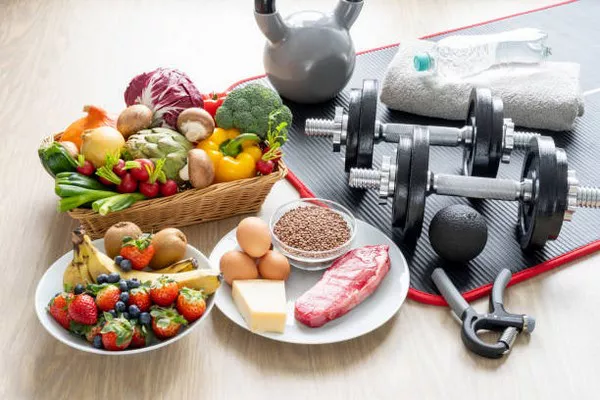When considering a healthy diet, understanding the balance between protein and calories is essential. This article will delve into the importance of a good protein to calorie ratio, how to calculate it, and provide specific suggestions for achieving optimal nutrition.
Understanding Protein and Calories
What is Protein?
Protein is a macronutrient essential for building muscle mass. It is composed of amino acids, which are the building blocks of our body. Protein plays a crucial role in muscle repair, immune function, and hormone production.
What are Calories?
Calories measure the amount of energy in food. Our bodies use this energy to perform essential functions such as breathing, digesting food, and physical activity. Maintaining a balance between the number of calories consumed and burned is vital for weight management.
Importance of Protein to Calorie Ratio
Role in Muscle Building
A high protein to calorie ratio is crucial for muscle growth and repair. Consuming adequate protein while maintaining a caloric balance helps ensure that muscles receive the necessary nutrients without excess caloric intake, which could lead to fat gain.
Weight Management
Foods with a good protein to calorie ratio can help with weight management. High-protein foods tend to be more filling, reducing overall caloric intake and promoting weight loss or maintenance.
Metabolic Health
Protein has a higher thermic effect compared to carbohydrates and fats, meaning the body burns more calories digesting protein. This can enhance metabolic rate and contribute to better metabolic health.
Optimal Protein to Calorie Ratio
General Guidelines
For muscle gain: Aim for a protein to calorie ratio of at least 15-20%.
For weight loss: Aim for a protein to calorie ratio of 20-30%.
For maintenance: Aim for a protein to calorie ratio of 10-20%.
Foods with High Protein to Calorie Ratio
Lean Meats
Chicken Breast: Approximately 31 grams of protein and 165 calories per 100 grams, yielding a ratio of 18.8%.
Turkey: Approximately 29 grams of protein and 159 calories per 100 grams, yielding a ratio of 18.2%.
Fish
Tuna: Approximately 30 grams of protein and 132 calories per 100 grams, yielding a ratio of 22.7%.
Salmon: Approximately 25 grams of protein and 206 calories per 100 grams, yielding a ratio of 12.1%.
Dairy
Greek Yogurt: Approximately 10 grams of protein and 59 calories per 100 grams, yielding a ratio of 16.9%.
Cottage Cheese: Approximately 11 grams of protein and 98 calories per 100 grams, yielding a ratio of 11.2%.
Plant-Based Options
Lentils: Approximately 9 grams of protein and 116 calories per 100 grams, yielding a ratio of 7.8%.
Tofu: Approximately 8 grams of protein and 76 calories per 100 grams, yielding a ratio of 10.5%.
Incorporating High Protein to Calorie Foods in Your Diet
Breakfast
Greek Yogurt with Berries: High in protein and low in calories.
Egg White Omelette: Packed with protein and minimal calories.
Lunch
Grilled Chicken Salad: Lean protein with plenty of vegetables.
Tuna Wrap: High-protein tuna in a low-calorie wrap.
Dinner
Baked Salmon with Asparagus: Rich in protein and healthy fats.
Stir-fried Tofu with Vegetables: Plant-based protein with low-calorie veggies.
Snacks
Cottage Cheese with Pineapple: High in protein and satisfying.
Almonds: A protein-rich nut that is easy to carry.
See Also: What Is A Good Post Workout Protein Shake
Benefits of a High Protein to Calorie Ratio Diet
Enhanced Satiety
High protein foods increase feelings of fullness, helping reduce overall caloric intake and aiding in weight loss.
Improved Muscle Mass
Consuming adequate protein supports muscle repair and growth, which is crucial for athletes and active individuals.
Better Blood Sugar Control
Protein helps regulate blood sugar levels, reducing spikes and crashes associated with high carbohydrate intake.
Enhanced Metabolism
The thermic effect of protein boosts metabolism, helping the body burn more calories even at rest.
Potential Drawbacks
Risk of Nutrient Imbalance
Focusing too much on protein can lead to insufficient intake of other essential nutrients like carbohydrates and fats.
Kidney Health Concerns
High protein diets can strain the kidneys, especially in individuals with pre-existing kidney conditions. It is crucial to consult a healthcare provider before making significant dietary changes.
How to Maintain a Balanced Diet
Diversify Your Protein Sources
Include a variety of protein sources in your diet to ensure a wide range of nutrients. Combine animal and plant-based proteins for a balanced intake.
Monitor Portion Sizes
Even high protein foods can contribute to excess caloric intake if consumed in large quantities. Be mindful of portion sizes.
Balance Macronutrients
Ensure your diet includes a healthy balance of carbohydrates and fats alongside protein to meet all nutritional needs.
Sample Meal Plan
Day 1
Breakfast: Greek yogurt with honey and almonds.
Lunch: Grilled chicken breast with quinoa and steamed broccoli.
Snack: Cottage cheese with fresh berries.
Dinner: Baked salmon with sweet potatoes and green beans.
Day 2
Breakfast: Egg white omelette with spinach and tomatoes.
Lunch: Tuna salad with mixed greens and a light vinaigrette.
Snack: A handful of roasted chickpeas.
Dinner: Tofu stir-fry with mixed vegetables and brown rice.
Conclusion
Understanding and maintaining a good protein to calorie ratio is vital for overall health, muscle growth, weight management, and metabolic health. By incorporating high-protein, low-calorie foods into your diet and maintaining a balanced intake of macronutrients, you can achieve your nutritional goals effectively. Remember to consult with a healthcare professional before making significant changes to your diet to ensure it aligns with your individual health needs.


